Often heard but not seen, owls are not common backyard birds and these mostly nocturnal birds are definitely not feeder visitors. Owls can be a highly desirable guest to your yard and are fascinating to both hear and observe.
Skilled and silent hunters, they prey on rodents, insects, and other pests in your garden, making them an important member of backyard ecosystems. How to attract owls to your property can be tricky at first, but with the use of these tips, and a little perseverance, you can attract these elusive visitors to your backyard.
1. Install a nesting box
Many owls use cavities or dying trees to nest in, but you can also install a nesting box to provide safe shelter for the owls you are trying to attract. One way to ensure the owls come is to give them space to not only rest but to nest and raise young.
While they usually use tree cavities or natural hollows, you can purchase or build nesting boxes to provide them with a secure location to set up home. A nesting box is an enclosure provided for birds to nest in. The size and location of the box can vary based on what type of owl you are trying to attract.
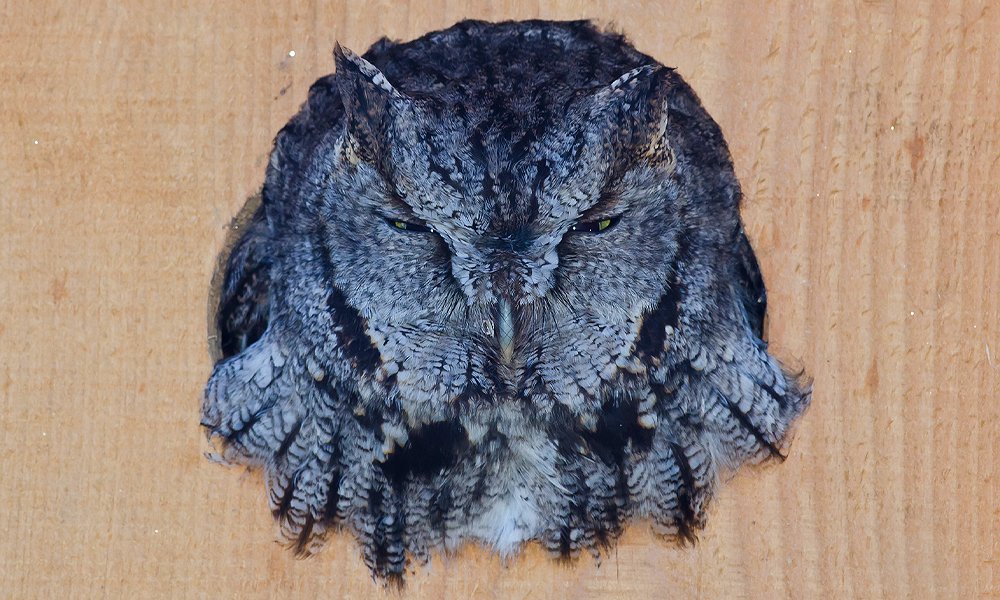
For instance, screech owls have been known to use nesting boxes with an entrance hole of at least 3 inches in diameter, while the northern saw-whet owl favors a 2-inch entrance hole (1). Nesting boxes are usually made of wood and come in a variety of sizes from large to small.
These wooden boxes usually have an overhang to prevent rain from going in, and a metal guard around the hole to prevent predators from chewing it to make it larger. Positioning them at least 10-20 feet above the ground, and away from perches for predators is best. Owls nest much earlier than other species, so boxes should be put up by January or February to give the owls plenty of time to find their new home.
Also read: How smart are owls? (The answer is surprising)
2. The location of the owl house is the key
As with all things real estate, when it comes to owl houses, the location is the key. Owls will only visit areas they feel safe, so the positioning and placement of your box need to be in an area that will be favorable for them.
Houses should be placed in a sheltered spot facing away from prevailing winds, and preferably south-facing to keep them warm. Make sure they are installed with enough stability to offer protection for the owls from both wind and predators, as even subtle movements can affect whether they will be used or not.
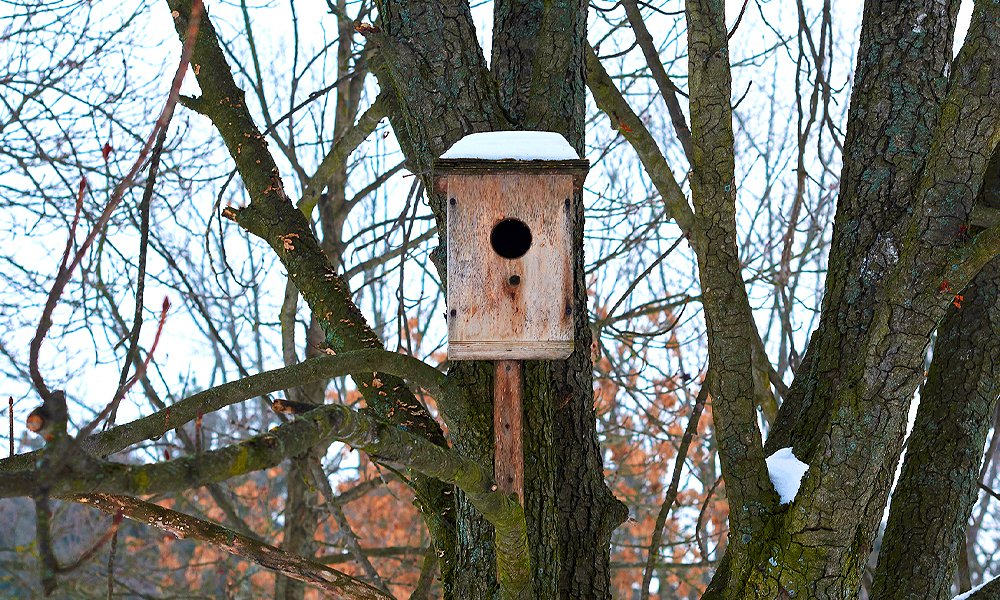
The type of house you buy or build will depend largely on the owls in your area. An entrance hole diameter of at least 2 inches, a depth of about 23 inches, and a roof height of at least 12 inches will work for most cavity-nesting owls.
Affix houses to a tall tree or pole at least 10-15 feet off the ground to provide a safe space away from predators for the owls to make their home. And last but not least, make sure nothing is blocking the flight path into the box, like a nearby building or branches, to give your owls easier access.
3. Add a large bird bath
Although they may not be frequent visitors to bird baths, like other birds, owls also need water for drinking and bathing. Owls get the vast majority of their fluid needs from their diet, so they aren’t big water drinkers.
But during the summer or in hotter climates, they may visit slightly larger, deeper birdbaths to drink or bathe. Given their size, it’s unlikely owls will swoop in on a small shallow bird bath.
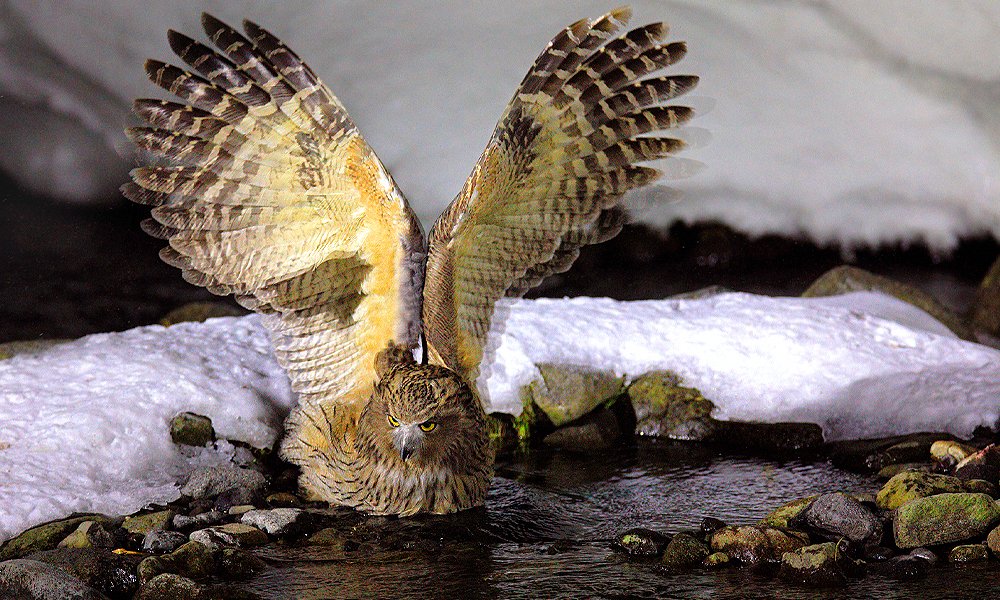
To encourage owls to bathe in your yard, install a large, deep basined bird bath in a secluded area that will be safe from interference. Deep basins (2 inches minimum) offer a generous gulp, or act as a bathtub for cleaning and cooling off.
Ideally, bird baths for owls should be made of a durable material such as metal, and offer a sloping edge so owls can ease in. You can find many options available in stores or online or build your own.
4. Snuff out a starling problem
European starlings have been known to take over screech owl boxes before the owls even have a chance to move in. Snuff out a starling problem before it even starts by monitoring your box for any signs of this invasive species.
The best way to do this is to place your box in a wooded, and not open, area (2). If this isn’t possible, closely monitor your boxes for any signs of use. Owls don’t build nests inside the box, so it’s best to scatter 2 to 3 inches of untreated wood shavings, dried pine needles, or leaves inside.
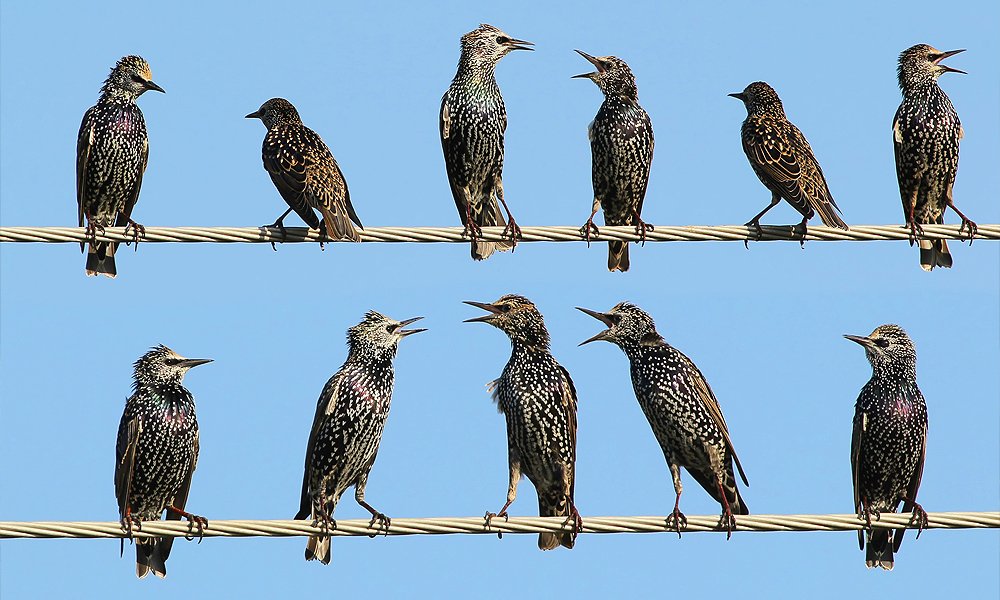
If they find them, starlings will start to fill the box up with grass and straw material to start building their own nest and will quickly try and take over.
These aggressive birds have even been known to destroy eggs and nests and kill nestlings or adults to take over a nesting box (3). Monitor your boxes closely for any non-target bird activity and actively deter starlings from entering your area for the best chance at attracting owls.
5. Create a perching spot
Give owls a safe space to rest and save energy while watching for prey by creating a perching spot for them. Owls use perches as a resting spot while they are hunting, preening, or simply on the lookout for predators.
Since most owls don’t venture out until night, they like to hide inside dense cover during the day. Natural perches such as old trees, branches, and snags all provide excellent safe spaces for owls to use as perches.
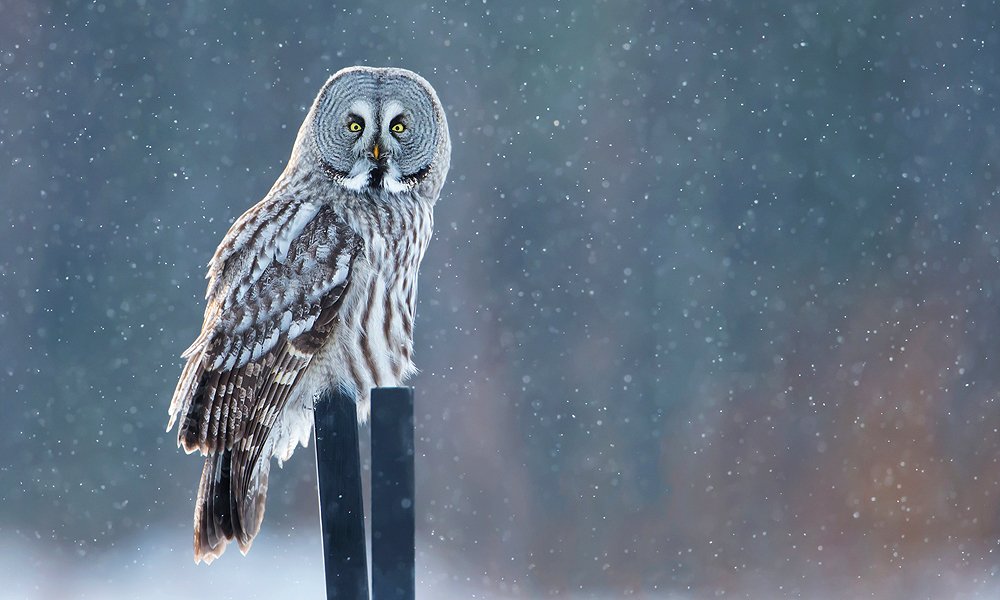
If no natural perches are present, though, a well-placed fence post, pole, or homemade cross-board will do the trick. In especially windy areas, or if you have space, use at least two cross boards and provide a perch every 200 feet.
Keeping large branches on trees also gives owls a prime horizontal perch location to scout the area. Creating a rustic, natural selection of backyard habitat, with little pruning or maintenance, can make owls feel more comfortable, especially for nesting or roosting.
Also read: What Animals Eat Owls? (When Predator Becomes Prey)
6. Kill the lights
We often hear their unmistakable calls across the night air – largely nocturnal; owls are usually heard and not seen. These stealthy hunters use eyes and ears specifically adapted to help them hunt in the dark (4).
Owls hunt more effectively in darkness and will avoid well-lit yards to keep this advantage over their prey. Exterior lighting not only disrupts an owl’s natural hunting patterns, but it can also take away their advantage of stealth.

Avoid extensive exterior lighting such as illuminated water features, floodlights, spotlights, and motion sensor lights. Put outdoor floodlights on timers, and if possible, turn off all exterior lights once you’ve gone to bed so the owls can get to work.
These effective pest controllers will not visit well-lit yards, so help them out by providing a safe (and dark) space for them to hunt and rest at night. By keeping your outdoor lights off at night, you increase the odds of an owl visiting your yard.
Also read: 17 Fascinating Owl Facts You Didn’t Know
7. Keep the grass growing
Need an excuse not to mow the lawn? It’s for the owls, of course. Many of an owl’s natural prey choices, such as moles, mice, shrews, and voles, are drawn to long, thick grass.
Mowing your lawn less often creates just the right environment to draw out these little critters and provide a more appealing hunting ground for owls. Mice and other small rodents are likelier to traffic longer spans of grass.
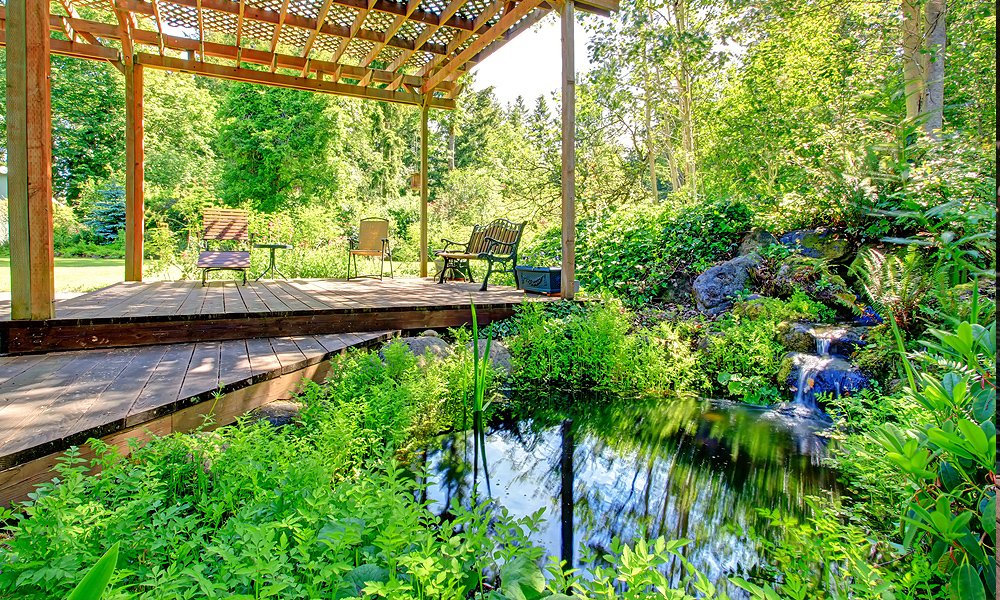
So, leaving the grass longer than you normally would create just the right conditions for prime owl hunting territory. In addition to keeping the grass growing, collect brush, or other twigs for a brush pile.
Adding a brush pile not only attracts mice and other rodents for your owls to feed on but can be used by songbirds for nesting material as well. By providing better conditions for their prey, and hopefully increasing their food supply, owls will be sure to make your yard one of their favorite hunting grounds.
8. Keep the old trees
While some owls make their home in grasslands or prairies, most owls call the forest home, and trees are a necessity for attracting owls. Not only do owls need somewhat dense, mature trees to roost during the day.
They prefer shaded and secluded areas, so they are not disturbed – but they also need them for nesting. While old and dead trees may be an eyesore to us, if they do not pose a threat or danger, keep the old trees around to make your yard even more attractive for owls.

Leave large, bare branches and dead trees intact as much as possible to provide more perching and roosting spots for your owls. Giving them a place to roost, rest, and build their nest will make your yard a more appealing stop on their search for a suitable territory.
Providing natural spaces like these, where the owls can feel safe during the day, is one of the best ways to encourage them to roost nearby.
9. Keep the pets inside
Although many people think their pets are too small to catch the eyes of owls, hungry owls can cause big trouble for small dogs, pet rodents, or cats.
Small breeds like Chihuahuas and Yorkies are especially susceptible given their size, but even cats, and larger pets can be in danger too. Owls are wild animals, and nesting owls can be more aggressive than normal (5).

Owls will prey upon anything they think they can handle or anything that poses a threat. Supervise small pets during the day and keep them indoors at night. Not only does this keep your furry friend safe from hunting owls, but it also allows for a safer relationship between humans and owls.
Keeping your pet indoors, or supervised when outside, gives owls the space they need and stops pets from disturbing important factors to attract owls – like scaring away rodents and other pests best left to owls.
Also read: 12 Tips on how to get rid of owls when they become a problem
10. Welcome rodents
Owls are mainly carnivorous birds and many feed primarily on small mammals such as rodents. Mice, voles, gophers, chipmunks, and even ground squirrels will all attract owls, even though that may not be something you want to think about.
This is because most homeowners are trying to avoid a rodent problem. Keeping a brush pile is one way to help a healthy rodent population thrive in your backyard.
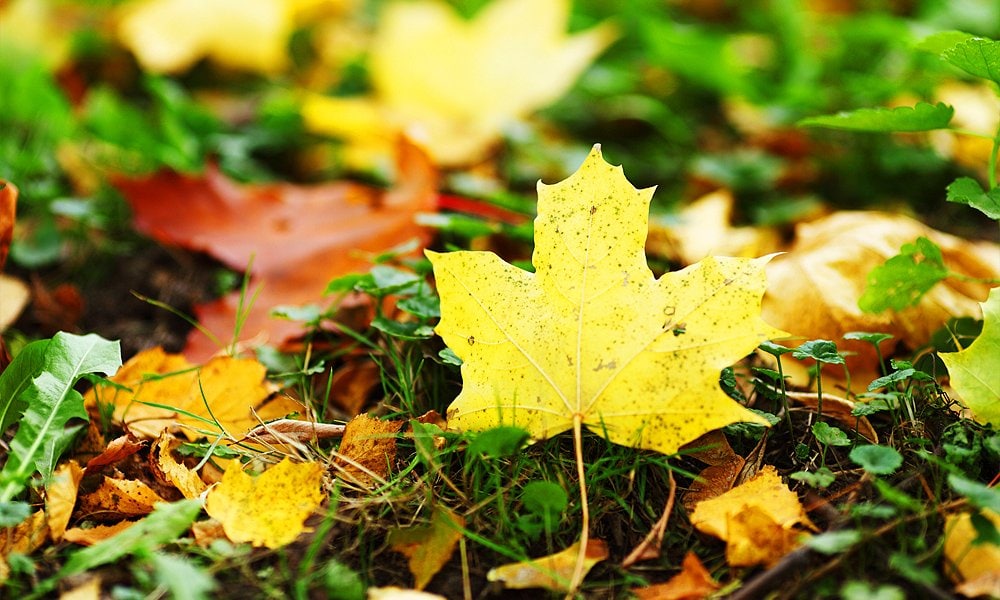
Brush piles can include tall grass trimmings, sticks, old leaves, and other natural materials for the rodents to inhabit. Always vulnerable to predators due to their small size, rodents look for strong shelters to burrow underground and provide maximum protection – like a brush pile.
Keeping the pile at the end of your property – opposite your home – is one way to lessen the chance of rodents making their way into your home or outbuildings. Without a steady food source, like a healthy rodent population to hunt, owls will never stick around for long.
11. Avoid rat poisons and pesticides
Unbeknownst to many, pesticides and rat poisons can take a severe toll on the bird population and owls are no different. Mice, rats, snakes, gophers, and many other garden visitors are considered pests.
Trying to control them through the use of poisons and pesticides may be damaging to birds. Although they may be unwanted guests in your garden, many of these critters are also a critical part of an owl’s food chain.
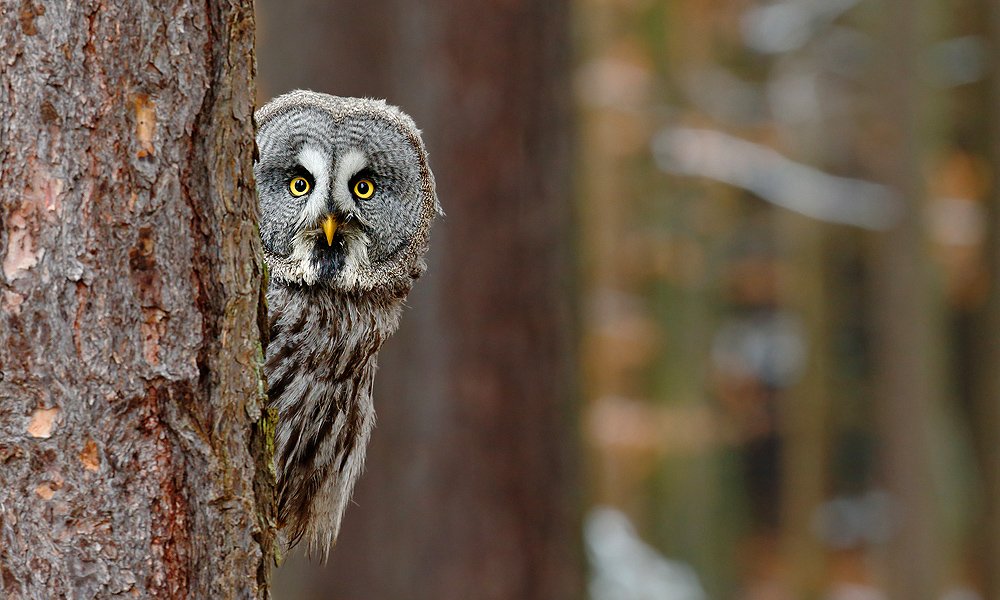
Removing them can upset the natural balance of the area and while there are many methods of pest control, all can take a toll on birds if not done properly. Poisons not immediately fatal to the intended recipient (i.e., mouse) become secondary contaminants for the unfortunate owl that eats them.
“Secondary poisoning” or “secondary toxicity,” as it is also known, is responsible for the deaths of many hawks and especially owls. Birds can suffer neurological damage that can lead to debilitation and eventually death from these poisons, causing disastrous ecosystem effects.
Also read: How long do owls live?
12. Avoid recorded owl calls
It can be tempting to use recorded bird calls to lure birds to your area but avoid recorded owl calls. When birds hear a recording, they don’t know it’s a recording, and it can signal many things to them that may not be true.
For instance, when an owl hears recorded owl calls, they may think any number of things are happening that aren’t necessarily true and become agitated.
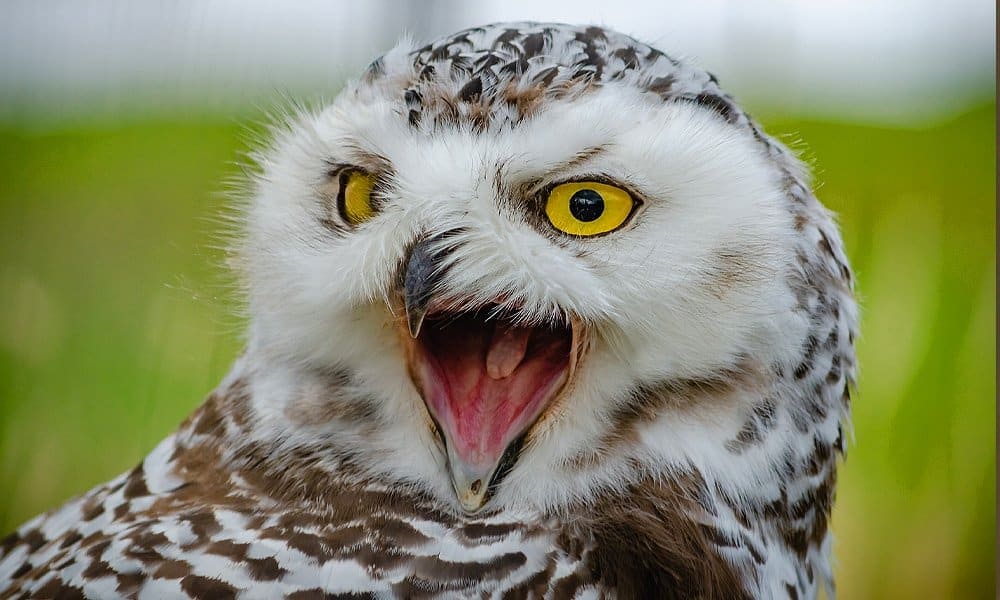
Depending on the call, they may believe another bird has invaded their territory and will seek out to challenge this competitor. Not only that, but listening to the call takes precious time away from other natural survival activities like tending to eggs, preening, or precious rest.
Using recorded owl calls may be tempting to lure owls to your yard at first, but creating unnatural stress for the owls in this way impacts the birds and their well-being for worse in the long run.
Also read: Why do owls hoot?

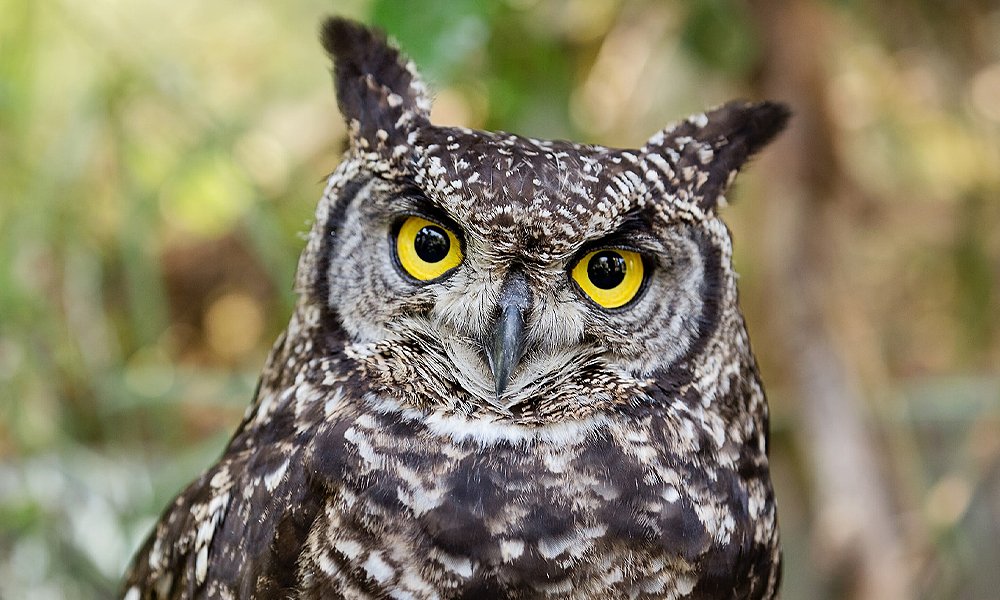
This owl has taken up residence in my gazebo. I would like to keep him around because his presence seems to scare off the squirrels that have been destroying my outdoor furniture, but I want to use my gazebo this summer. Two questions – do you know what kind of owl he is? and might I be able to attract him to an owl house to keep him around but free up my gazebo?
I would like to send a picture of him but am unable to paste it. He is pretty small, looks very young and has very long ears! I live in Plano, TX.
Thanks for your help.
Hello Garth – Thank you ever so kindly for your time and research, which I know you must enjoy. I am certain, that I do.
My nearest neighbors, are the critters. I live in the high desert, just down from the mountain. As a Native American, I know that it is my duty as a stewardess of the land, to create a beautiful, plentiful and love filled atmosphere for all living things.
No pesticides, herbicides, traps, poisons or irritations for those who seek a natural home. My place of residence, is where the owls and other interesting creatures of the land and sky come to roost or just pass through.
Bow bats, fruit bats, road runners, coyote, bob cat, mountain lion, badger, skunk, pack-rats, deer, bear, javelina as well as ibex visit with me, throughout the months of the year.
They come to my darkness as a place to live and of refuge.
This is an oasis for quenching a thirst, to build a nest, begin a family, get a nibble or a bite, and to be hidden, in the day or night.
Creator bless ~
Depswah
This article is wonderfully informative! I adore owls (what’s not to love!) and according to the article, my quiet country place is the perfect setting. Part forest, part open field; perhaps it’s already home to these lovely creatures. Thank you for providing exactly what a novice needs to begin this adventure.
I bought a house in January when the big walnut tree in the yard was leafless and I saw an owl on one of the branches leaning on the roof of the outhouse in the yard. Every morning at dawn she was there. I think maybe she lived in the roof of that uninhabited house under the walnut tree. Now the walnut is full of thick green leaves and I can’t see the owl, except once when it ran away because I was busy doing something under the walnut itself.
I work under the walnut tree every day now, there is my compost and at the same time I want to save the owl. Will he stay? Now I’m using that auxiliary house and trying to make an owl house at the same time. The problem is that all those little houses are deep and I wonder how an owl can go down and climb up to the hole when it certainly can’t fly inside. I would place the house for the owl on the tree at the height of the roof where it lived.
Will he stay?
I think she is Athena noctua (Little Owl)
Owls may take some time to warm up to a new nest box in their environment, so I’d try placing the box and leaving it for a while first. Even little songbirds can take months to adjust to using a new feeder. You said you wanted to “save” the owl, but it sounds like he’s doing just fine! If your yard was hospitable to him before he’s probably still nearby just maybe a bit more secretive. I hope this helps!
— Hailey Brophy
Writer @ World Birds
Thank you for posting this great information! I was wondering if owls are disturbed by children playing and the usual racket of a pack of 8 to 11-year-old boys playing sports or games in the front yard? We have heard multiple owls in the trees right around us and just saw a baby sitting on the power lines in our yard, so it doesn’t appear so, but was curious if the din would prevent them from nesting in our box.
Western Screech Owls nested in my neighbor’s backyard (about 25 feet from their back deck!) & hunted in mine for years. Neighbor’s have 3 very active kids & a boisterous German Shepherd who play quite close to the tree nest which didn’t bother the owls at all. They’re smart & at least in my area saw that neither kids nor dogs were a threat to them; alas, a pair of Barred Owls came into the neighborhood & the little Screechers moved out, pronto. If your nest box fits their needs I’m betting they’ll use it – good luck!
I have chickens of my own and am thinking of building owl box bc the owls are already around and haven’t attacked chickens yet. They have 1 rooster to protect 8 of them.
I would like to install an owl box/owl nesting box where we live in the country. Many of our neighbors have horses, goats, and sheep. One family does have some chickens approximately 1/2 mile down the road.
My question is how far does an owl’s hunting territory span out? I certainly would not want to have their chickens harmed.
Also, is it necessary to let neighbors know you are trying to attract owls to take care of any rodent problems?
Thank you.